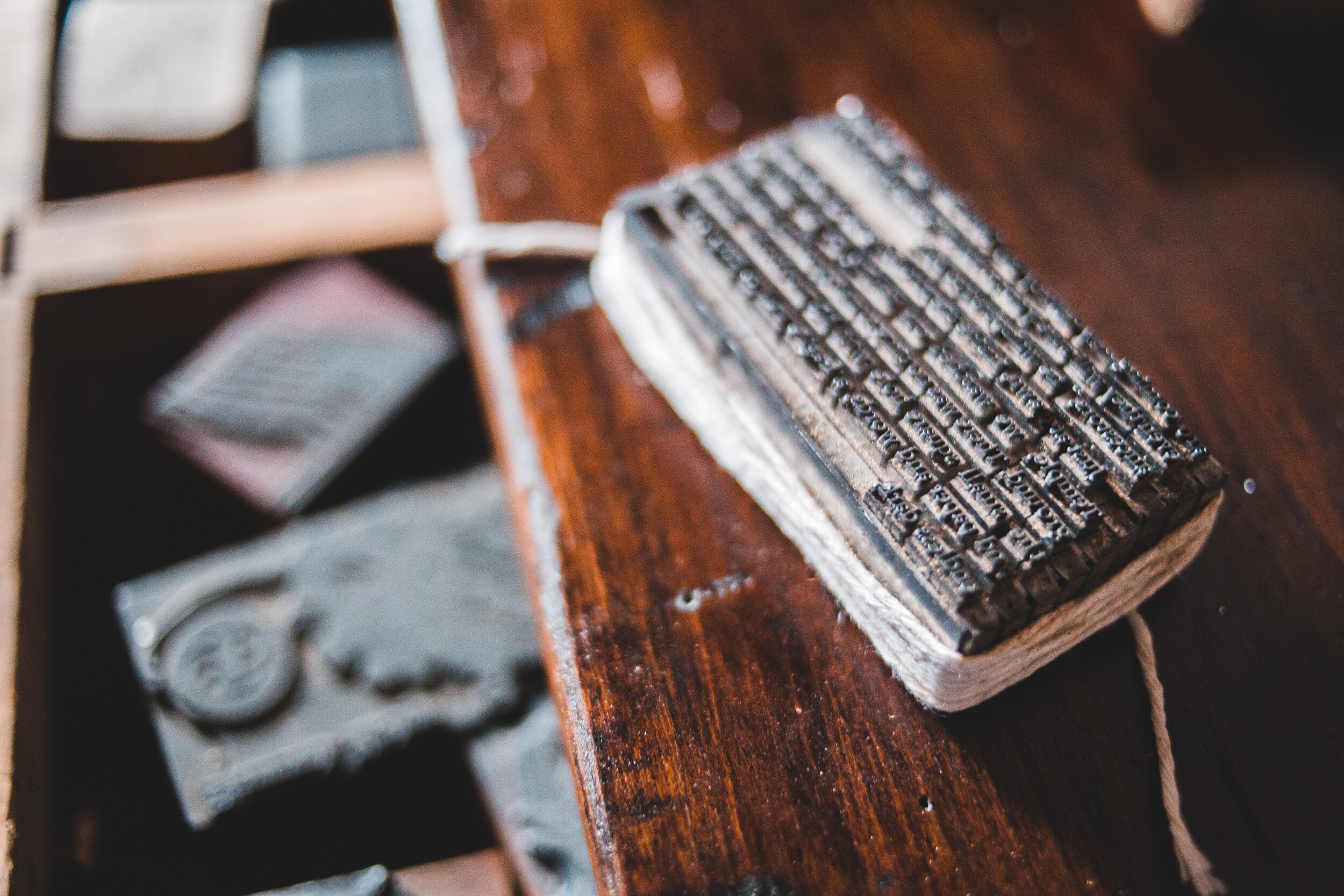This is part twenty-five of a series called One a Day in May, where we will review one wedding stationery term every day in May!
In the early days of professional printing, typesetters accumulated huge collections of tiny wood- or metal-carved letters. They would gather all the letters and punctuation required for a sentence or group of words and assemble them into blocks to be inked and applied to paper. This was called “handset type.”
Over hundreds of years this printing process remained mostly the same. Then in the 1800’s printers started using heat to create whole “plates” of print out of metal, instead of assembling moveable type. This saved printers time and space (imagine having to store literally thousands of teeny tiny blocks with the letters carved into them just to print one article or passage!?) and this became the new standard for letterpress, engraving and offset printing.
Finally in the 1980’s, printers found a light-sensitive material (polymer) that could be imprinted with a digital file using UV light exposure.
Now-a-days, a “plate” refers to the customized piece of polymer, magnesium or other metals like copper or brass, (both of which are more expensive but also more durable and require less maintenance) that yields your invitation or stationery design. These plates are created specifically for your print so they do accompany the higher-end (and sometimes higher priced) printing techniques such as foil-press, letterpress and engraving.


